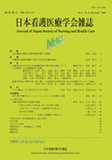Japanese
English
- 有料閲覧
- Abstract 文献概要
- 参考文献 Reference
要旨
ヒト尿中には糖蛋白物質であるアルファ-1-ミクログロブリン(α1M)とウリナスタチン(UT)が排泄されている。これら両物質の尿中動態は精神神経疾患によって差異が見られる。即ち、尿中のα1M量とUT量との関係を示す回帰直線の勾配は精神分裂病患者群では健常対照群と変わらないのに対し、痴呆症患者群と大うつ病性障害者群ではそれぞれの対照群より勾配は有意に(p<0.05)急峻である。このことは痴呆症患者群と大うつ病性障害者群での尿中のα1M量とUT量の関係はそれぞれの対照群で認められる関係とは明らかに異なっていることを示している。また、パーキンソン病患者群では尿中のα1M量とUT量との間に相関が見られない。一方、尿中のα1M量とUT量自体には各疾患群と対照群との間に差異は認められない。このように尿中のα1M量とUT量そのものでなく、両物質の関係で検討するとき精神神経疾患群によって違いが見られる。尿サンプルは非侵襲的に得ることができ、この両物質の解析は精神神経疾患での有用な情報をもたらすと思われる。
Abstract
In humans, two glycoproteins, alpha-1-microglobulin(α1M)and ulinastatin(UT), are excreted in urine. Dynamic changes of these two substances in urine differ with psychoneurological diseases: The slope in the regression line showing the relation between urinary contents of α1M and UT did not differ between the schizophrenia group and healthy controls. However, the respective slopes of dementia and major depression groups were significantly(p<0.05)more inclined than those of relevant control groups. These results suggest that the relationship between urinary contents of α1M and UT in dementia and major depression groups differs from that of healthy subjects. As for Parkinson's disease group, a correlation between urinary contents of α1M and UT was not established. The respective contents of α1M and UT in dementia, schizophrenia, major depression and Parkinson's disease groups did not differ from those of respective controls. Thus, the relation between urinary contents of α1M and UT, but not the contents per se, was found to vary with psychoneurological diseases. Examination of the urinary contents of α1M and UT in noninvasively collected urine specimens would provide useful information on psychoses and neurodegenerative diseases in humans.
Copyright © 2000, Japan Society of Nursing and Health Care All rights reserved.


